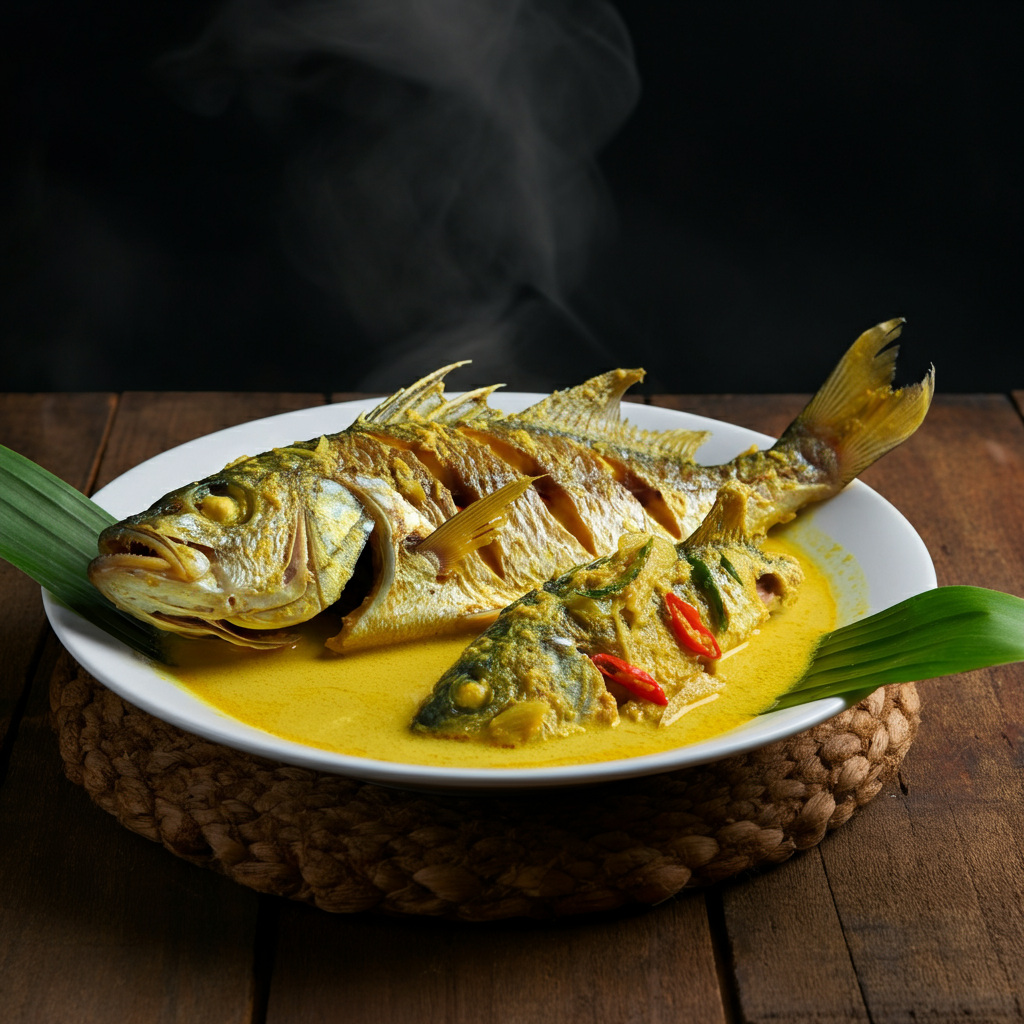Tutong
Brunei
A type of fish cooked in a coconut milk-based gravy. The specific type of fish varies.

Origins and History
Tutong, a beloved Bruneian dish, boasts a history deeply intertwined with the nation's rich culinary heritage. Its origins are difficult to pinpoint precisely, lost in the mists of time before detailed written records. However, the dish's reliance on readily available ingredients—fish and coconut milk—suggests an ancient lineage, likely originating in coastal communities where fishing was a primary sustenance activity. The use of coconut milk points to the influence of Malay and Indonesian cooking traditions, reflecting Brunei's historical and cultural ties to the broader Southeast Asian region. The exact evolution of the dish, from simple preparations to its diverse variations seen today, remains largely undocumented, passed down through generations within families and communities.
Cultural Significance
Tutong holds a significant place in Bruneian culture, often served during special occasions, family gatherings, and festive celebrations. The dish represents the country's abundance of natural resources, particularly its rich fishing grounds and coconut groves. Sharing a plate of Tutong is a communal act, reflecting the importance of family and community in Bruneian society. Its presence on tables during important events underscores its social and cultural value, transcending mere sustenance to become a symbol of shared experiences and cultural identity. The simple yet flavorful nature of the dish mirrors the understated elegance often associated with Bruneian culture.
Traditional Preparation
Traditional Tutong preparation begins with selecting the freshest fish available—often locally caught varieties. The fish is typically cleaned, scaled, and sometimes sliced, before being gently simmered in a rich coconut milk-based gravy. The gravy itself is usually a fragrant blend of coconut milk, turmeric, lemongrass, galangal, chilies, and other aromatic spices, creating a creamy and flavorful sauce that perfectly complements the delicate taste of the fish. The cooking method is slow and gentle, allowing the fish to absorb the flavors of the gravy fully, resulting in a tender and succulent texture. Often, the dish is garnished with fresh herbs such as coriander or lime leaves before serving.
Regional Variations
While the core concept of Tutong remains consistent across Brunei, subtle regional variations do exist. These variations often center around the type of fish used, reflecting the availability of different species in different coastal regions. The spiciness of the gravy can also differ, with some communities preferring a milder flavor while others opt for a spicier, more pungent taste. Certain regions might incorporate additional ingredients into the gravy, adding unique local touches to the dish. These subtle differences, however, do not detract from the essence of Tutong, instead highlighting the richness and diversity within Bruneian cuisine.
Modern Interpretations
In recent times, Tutong has seen some modern interpretations, although these largely retain the dish's core elements. Some chefs are experimenting with different types of fish, including imported varieties, while others are exploring unique spice combinations to create new flavor profiles. The presentation of the dish has also evolved, with some restaurants offering more visually appealing versions of Tutong. Despite these modern adaptations, the essence of Tutong—its simple yet flavorful nature, and its connection to Brunei's culinary heritage—remains intact, ensuring its continued popularity and appreciation among both locals and visitors alike.